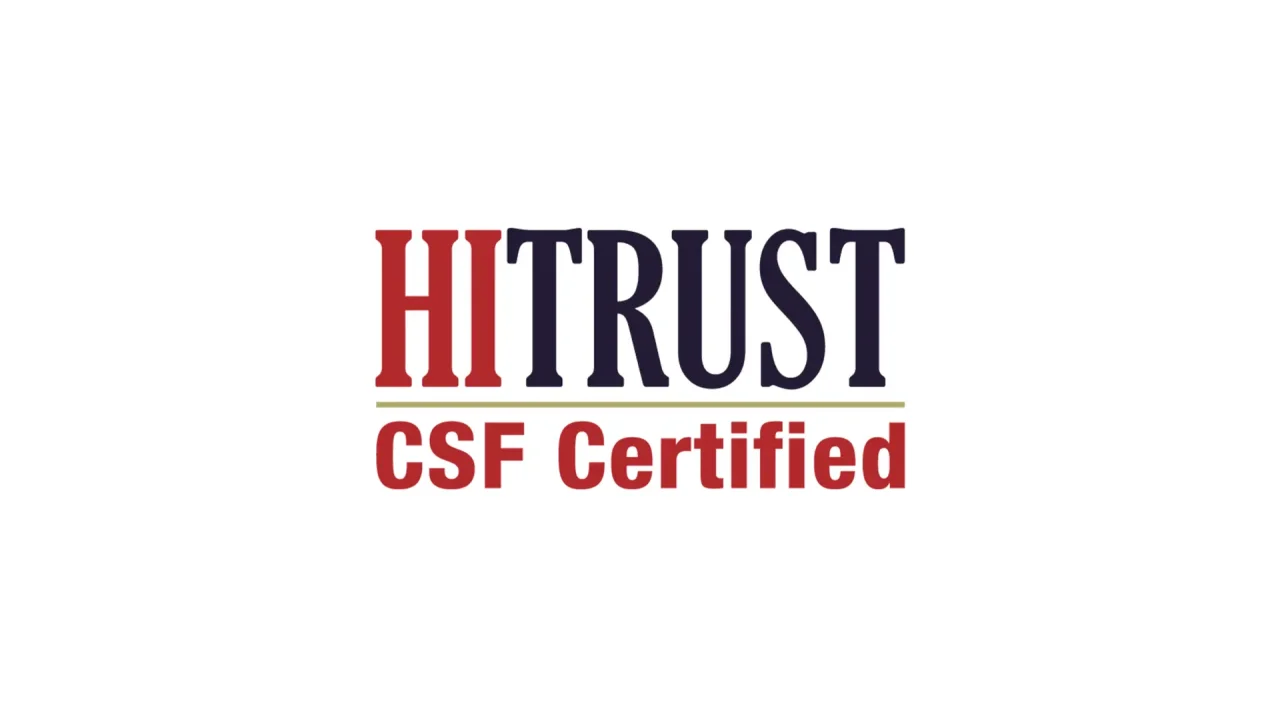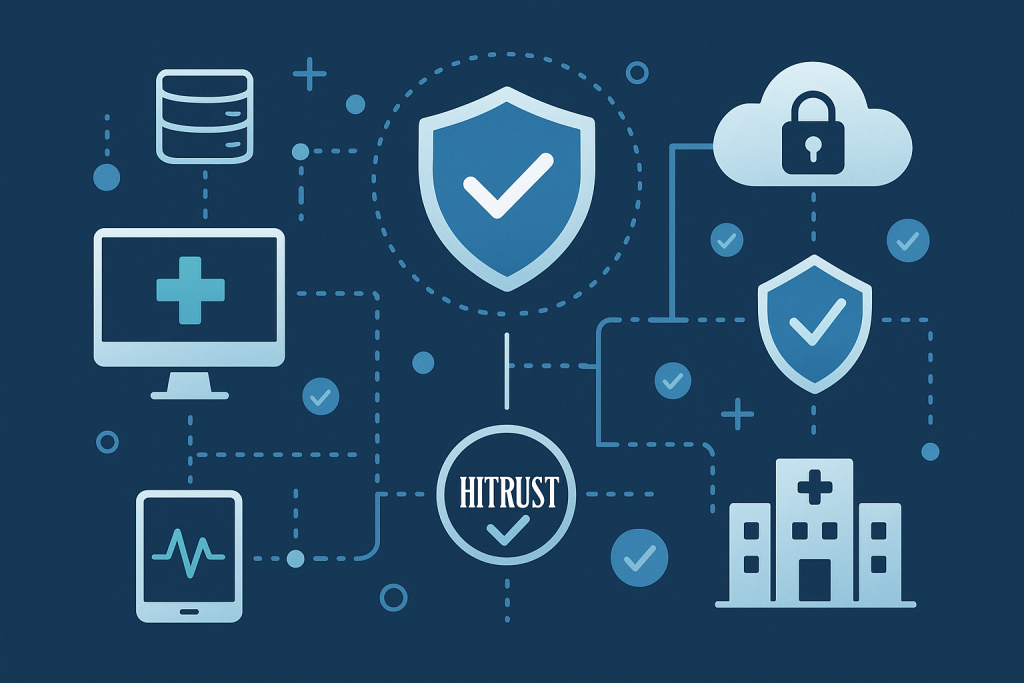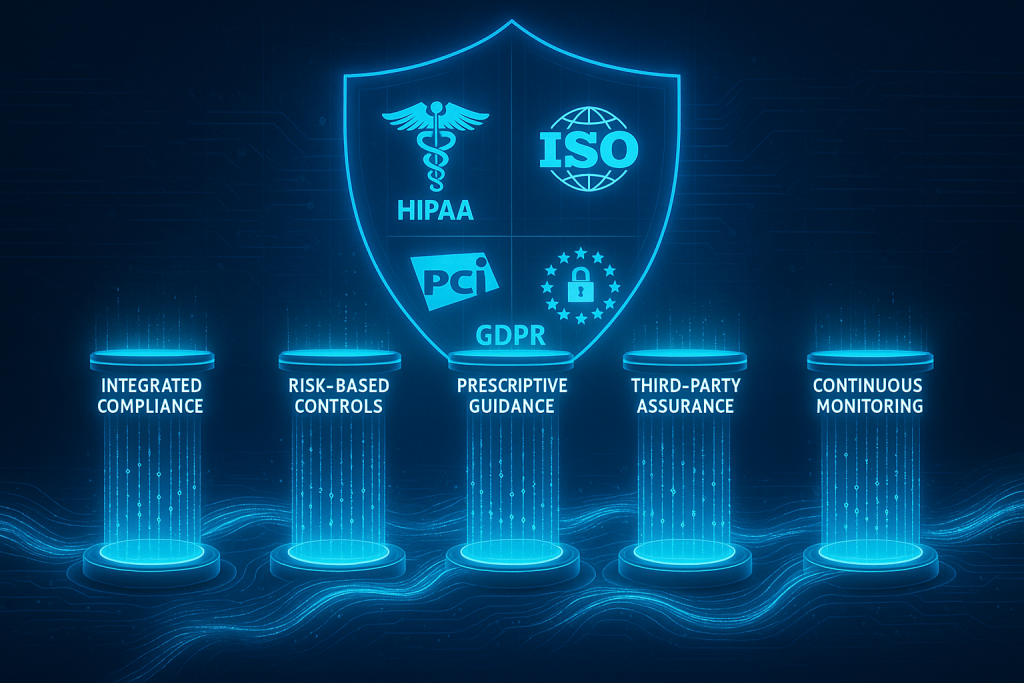HITRUST CSF

What is HITRUST CSF Certification?
HITRUST CSF (Common Security Framework) is a certifiable framework that unifies requirements from HIPAA, NIST, ISO, PCI DSS, and more into a single, prescriptive set of controls. It is widely recognized in healthcare and beyond as the “gold standard” for demonstrating compliance, managing risk, and protecting sensitive data such as Protected Health Information (PHI).

Think of HITRUST as a playbook for security and compliance one that streamlines overlapping regulatory requirements into a single framework, helping organizations improve security posture and build trust.
Learn how we also simplify ISO 27001:2022 Compliance with automation.
“HITRUST has become the most widely adopted security and privacy framework in the U.S. healthcare industry.” — HITRUST Alliance, 2023
Why HITRUST CSF Certification Feels Complex
Many organizations struggle with HITRUST CSF certification because it requires:
- Mapping and documenting controls across multiple frameworks and regulations.
- Implementing strict security and privacy safeguards for sensitive data.
- Training employees and vendors on compliance responsibilities.
- Measuring effectiveness through audits, metrics, and continuous monitoring.
- Managing third-party risks and ensuring vendor compliance.
It is not just about “checking the box”, HITRUST requires embedding security and compliance into the organization’s culture, processes, and supply chain.
U.S. Department of Health & Human Services HIPAA Overview regulatory context for PHI protection.
Core Principles of HITRUST CSF
HITRUST is built around principles of comprehensive and risk-based information protection:
- Integrated Compliance Harmonizes HIPAA, NIST, ISO, PCI, and GDPR.
- Risk-Based Controls Scales security requirements to business size, complexity, and data sensitivity.
- Prescriptive Guidance Provides detailed implementation requirements and audit criteria.
- Third-Party Assurance Extends trust through vendor and business associate certification.
- Continuous Monitoring Emphasizes ongoing security maturity, not one-time certification.

Risk-Based Thinking in HITRUST CSF
A central element of HITRUST is risk-based scaling requirements are tailored based on organizational risk factors such as industry, size, and the type of data handled.
Instead of applying a one-size-fits-all model, HITRUST:
- Identifies potential risks to PHI/PII.
- Requires preventive measures proportionate to those risks.
- Encourages proactive monitoring and remediation.
This makes HITRUST not just a compliance framework, but a strategic risk management tool that evolves with the business and regulatory environment.
“Organizations certified under HITRUST CSF demonstrate a proactive approach to managing cyber risks, ensuring that patient data remains secure and protected.” — Journal of AHIMA, 2022
Benefits of HITRUST CSF Certification
Achieving HITRUST CSF certification demonstrates to clients, regulators, and partners that your organization meets the highest standards of data protection. Key benefits include:
- Meeting multiple regulatory requirements with a single certification.
- Strengthening resilience against security breaches.
- Reducing audit fatigue with one comprehensive assessment.
- Improving vendor trust and competitiveness in healthcare and beyond.
- Enhancing internal security culture and accountability.
How Sahl Simplifies HITRUST CSF Certification
With Sahl, achieving HITRUST CSF certification becomes faster, easier, and less resource-intensive. Our platform:
- Automates control mapping across HIPAA, NIST, ISO, and PCI DSS.
- Tracks audit-ready evidence in real time.
- Streamlines remediation and compliance reporting.
- Monitors vendors and third parties for ongoing compliance.
By reducing complexity, Sahl accelerates certification while ensuring continuous adherence to HITRUST standards, helping you protect sensitive data, maintain client confidence, and win new business.
Explore our approach to SOC 2 Compliance for technology and cloud service providers.
Want to see how Sahl's Compliance Automation platform can make HITRUST easy?
FAQs
- Who needs HITRUST CSF Certification?
Healthcare providers, insurers, life sciences companies, vendors, and technology firms handling PHI or sensitive data. HITRUST Alliance Official Site – authoritative information on HITRUST certification. - Is HITRUST mandatory?
Not legally, but it is often a contractual requirement and a powerful market differentiator. - How long does certification take?
Traditional HITRUST readiness may take 9–18 months. With automation, businesses can significantly shorten preparation time. - Does HITRUST apply only to healthcare?
No. While most common in healthcare, it is also used in financial services, technology, and other industries where sensitive data must be protected. - How often is HITRUST certification renewed?
Every two years, with interim assessments to ensure ongoing compliance. - Does HITRUST work for small businesses?
Yes. HITRUST scales requirements based on organizational size, complexity, and risk profile.

